Peter's code (thanks btw!) works assuming that your image is grayscale. For colour images, what you need to do is read in all of the bytes as a single 1D array as we can't use fread to read the data is in as a 3D matrix (at least not to my knowledge...). After, we then reshape it so that it becomes a 3D matrix. After we reshape the matrix, notice that this is the transposed result. As such, we will have to either transpose each channel independently, or you can cleverly combine flipdim and imrotate to do the 3D transpose for us. I would rotate the image so that it's 90 degrees clockwise, but this would make the image mirror reflected across the columns. I then use flipdim with the second parameter as 2 as I want to mirror reflect across the columns to get the original image back.
As such, what you would actually have to do is this:
row=576; col=768;
fin=fopen('m-001-1.raw','r');
I=fread(fin, col*row*3,'uint8=>uint8'); %// Read in as a single byte stream
I = reshape(I, [col row 3]); %// Reshape so that it's a 3D matrix - Note that this is column major
Ifinal = flipdim(imrotate(I, -90),2); % // The clever transpose
imshow(Ifinal);
fclose(fin); %// Close the file
What I get is this image:

Alternatively, you can certainly use Peter's code, but you would use it so that you would reconstruct the image one colour plane at a time. In other words, you can do this:
row=576; col=768;
fin=fopen('m-001-1.raw','r');
I1=fread(fin, [col row],'uint8=>uint8'); %// Red channel
I2=fread(fin, [col row],'uint8=>uint8'); %// Green channel
I3=fread(fin, [col row],'uint8=>uint8'); %// Blue channel
I1 = I1.'; I2 = I2.'; I3 = I3.'; %// Transpose each channel separately
Ifinal = cat(3, I1, I2, I3); %// Create 3D matrix
imshow(Ifinal);
fclose(fin);
You'll get exactly the same image as above.


